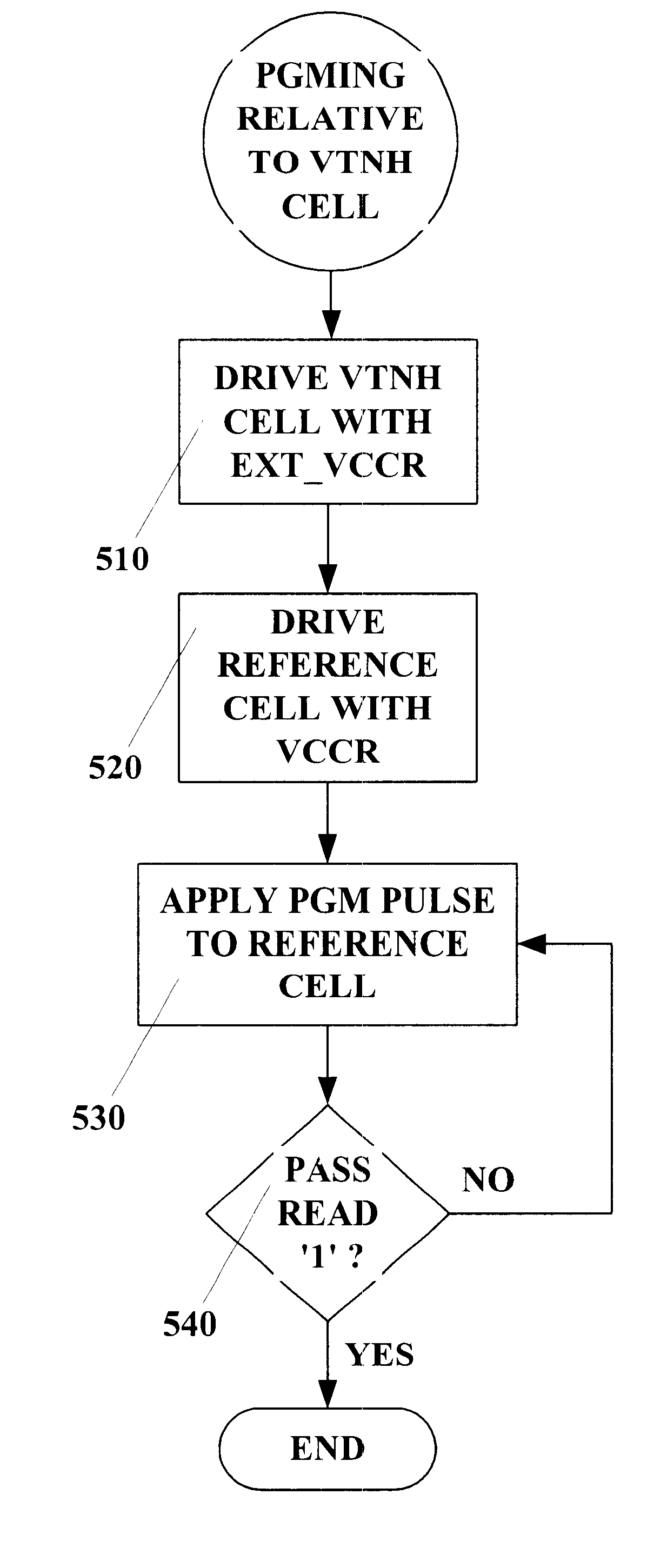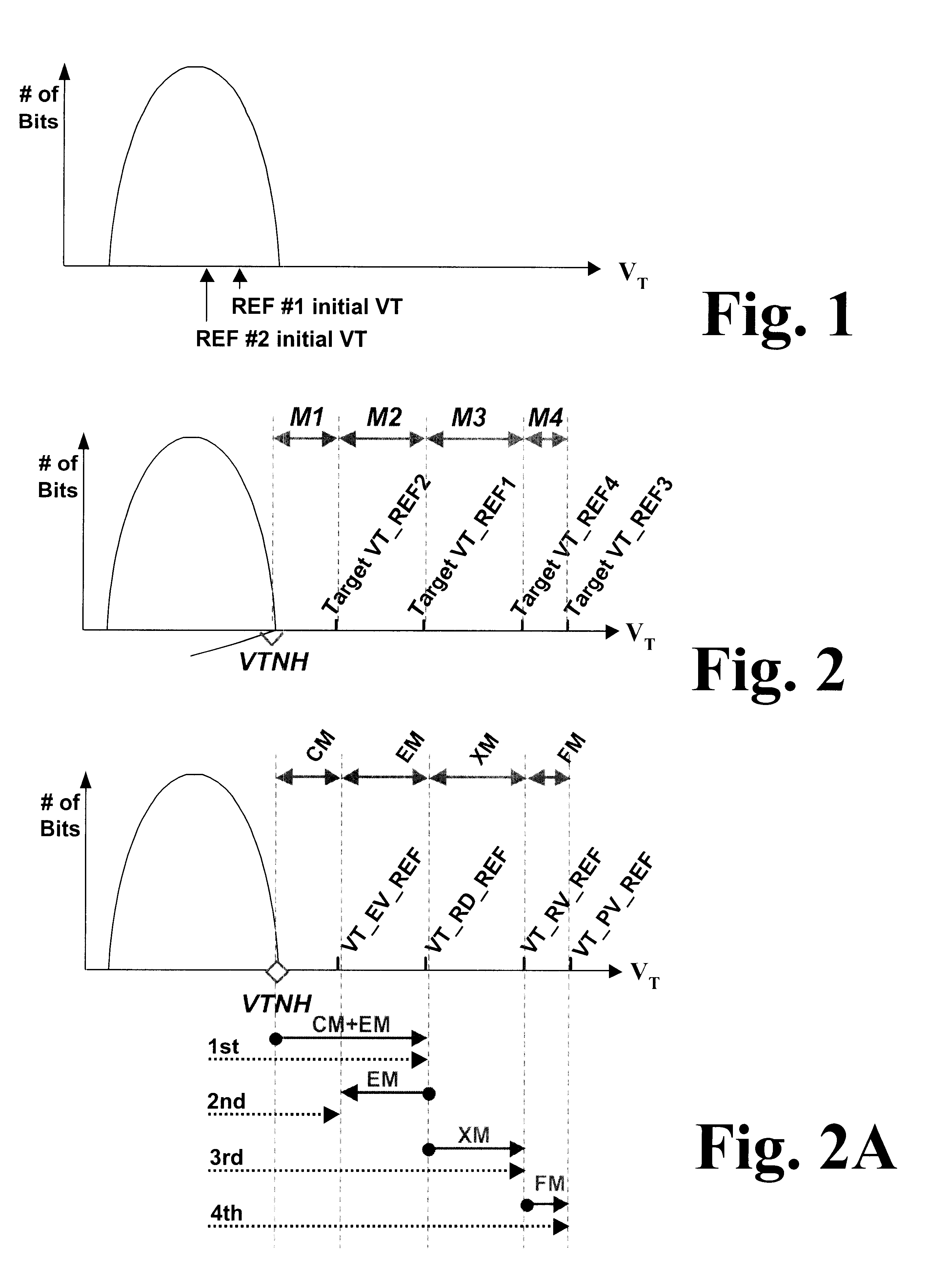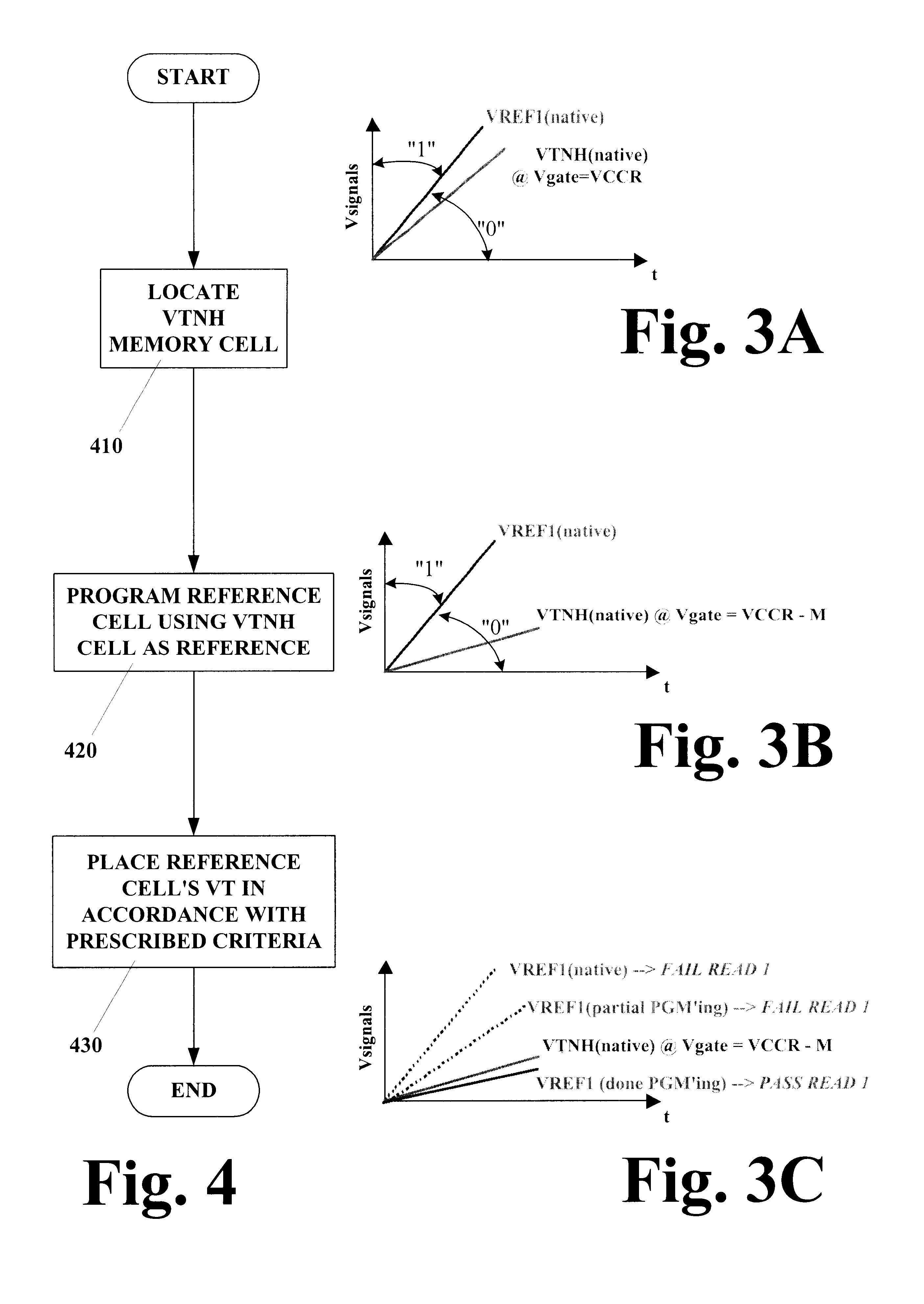Method for programming a reference cell
a reference cell and cell technology, applied in the field of reference cell programming, can solve the problems of introducing a margin loss to the sensing scheme, and achieve the effect of accurately determining the threshold voltag
- Summary
- Abstract
- Description
- Claims
- Application Information
AI Technical Summary
Benefits of technology
Problems solved by technology
Method used
Image
Examples
Embodiment Construction
By way of overview and introduction, the present invention is described in connection with a methodology for programming a reference cell to enable sensing of the contents of a memory cell from close to ground level. Such a memo array is described in the aforementioned U.S. Pat. No. 6,134,156 and U.S. application Ser. No. 09 / 827,756, filed on even date herewith and entitled "Architecture And Scheme For A Non-Strobed Read Sequence." By using a reference cell instead of a fixed threshold for comparison, a low voltage signal can be reliably processed irrespective of any changes in temperature or power supply level. The present invention bas applicability to other sensing schemes, including A.C. and D.C. sensing techniques, and with read operations from either the source or drain side of a transistor, as can be appreciated by those of skill in the art.
Reference is made to FIG. 1 which illustrates the memory array cells native threshold voltage distribution. The memory cells on the die i...
PUM
 Login to View More
Login to View More Abstract
Description
Claims
Application Information
 Login to View More
Login to View More - R&D
- Intellectual Property
- Life Sciences
- Materials
- Tech Scout
- Unparalleled Data Quality
- Higher Quality Content
- 60% Fewer Hallucinations
Browse by: Latest US Patents, China's latest patents, Technical Efficacy Thesaurus, Application Domain, Technology Topic, Popular Technical Reports.
© 2025 PatSnap. All rights reserved.Legal|Privacy policy|Modern Slavery Act Transparency Statement|Sitemap|About US| Contact US: help@patsnap.com



